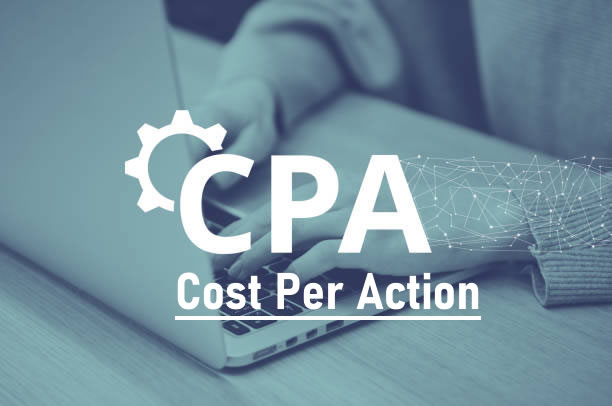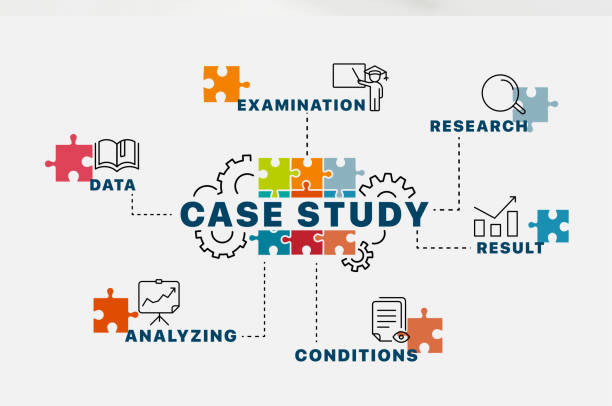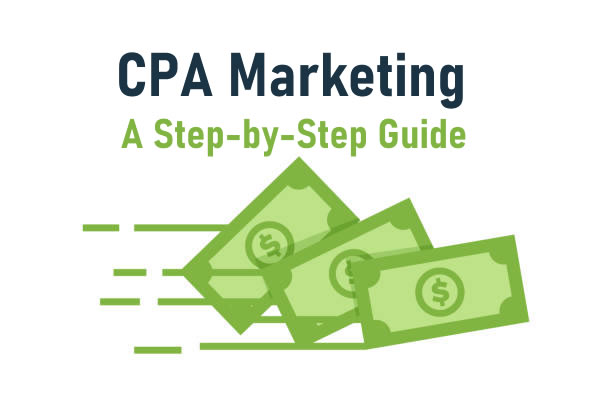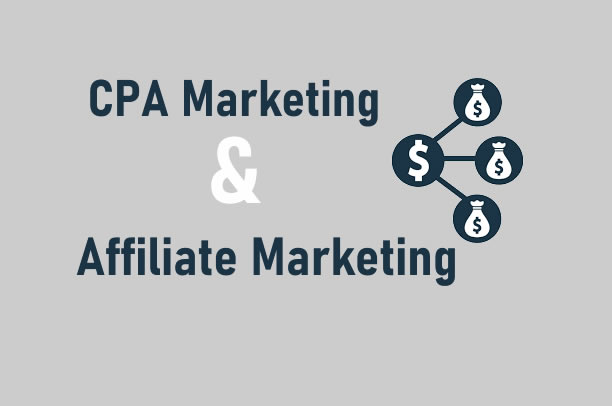
CPA marketing has emerged as a powerful strategy that has the potential to drive impressive results for businesses of all sizes. Cost Per Action (CPA) marketing is a performance-based advertising model that focuses on driving specific actions from consumers, such as signing up for a newsletter, making a purchase, or filling out a contact form.
In this comprehensive guide, we will dive deep into the world of CPA marketing, exploring its fundamentals, how it works, and why it’s an essential tool in the modern marketer’s arsenal.
What Is CPA Marketing, and Why Is It Important?
In the realm of online marketing, it’s crucial to understand the various models available to advertisers. Cost Per Action (CPA) marketing is one such model, often considered the gold standard for performance-based advertising. CPA marketing entails paying affiliates a commission for each specific action that is taken by a user as a result of the affiliate’s marketing efforts. This action can be anything from making a purchase, signing up for a service, submitting a form, or even just downloading an app.
The Importance of CPA Marketing in Today’s Digital Landscape
In an era where businesses are constantly seeking cost-effective and measurable ways to acquire customers, CPA marketing has gained prominence for several reasons:
- ROI-Centric Approach: CPA marketing is all about delivering results. Advertisers only pay when a desired action is completed, ensuring a positive return on investment (ROI).
- Precise Targeting: Advertisers can choose their ideal audience, ensuring that their message reaches the right people who are more likely to take the desired action.
- Measurable and Transparent: CPA marketing provides accurate performance metrics, allowing businesses to track, analyze, and optimize their campaigns in real-time.
- Risk Reduction: Since the risk is shifted from advertisers to publishers, CPA marketing provides a level of security, as businesses only pay for tangible results.
The Mechanics of CPA Marketing
To truly understand how CPA marketing works, it’s essential to delve into the mechanics of the process. This section will guide you through the key components of a typical CPA marketing campaign.
1. Advertisers
At the core of every CPA marketing campaign are the advertisers. These are businesses or brands looking to promote their products or services and are willing to pay for specific actions taken by potential customers. Advertisers define the terms of the action they’re looking for and the compensation they’re willing to offer for each successful conversion.
2. Publishers (Affiliates)
Publishers, often referred to as affiliates, are partners who promote the advertiser’s products or services through various marketing channels. They can be individuals or organizations with access to an audience interested in the advertiser’s offerings. Publishers are compensated based on the number of actions generated through their promotional efforts.
3. Offers
Offers are the specific actions advertisers want users to take. These can range from completing a purchase, filling out a lead form, signing up for a trial, or downloading an app. Each offer has a predetermined payout, which is the amount publishers will earn for each successful action.
4. Landing Pages
Landing pages are the web pages where users are directed to take the desired action. These pages are often optimized for conversion and contain compelling content and persuasive call-to-action elements.
5. Tracking and Analytics
The success of a CPA marketing campaign relies on accurate tracking and analytics. To measure the performance of a campaign, publishers use tracking tools that monitor clicks, conversions, and other relevant data. These insights allow for real-time adjustments to optimize the campaign.
6. Conversion Rate
The conversion rate is a critical metric in CPA marketing. It represents the percentage of users who complete the desired action after clicking on the publisher’s promotional content. A high conversion rate indicates effective marketing strategies, while a low rate may signal the need for adjustments.
7. Payment Models
There are various payment models within the CPA marketing ecosystem, including:
- Cost Per Sale (CPS): Advertisers pay a commission for each sale generated through the affiliate’s marketing efforts.
- Cost Per Lead (CPL): Advertisers pay the affiliate for each qualifying lead generated by a sign-up form or other data-gathering mechanism.
- Cost Per Click (CPC): Advertisers pay based on the number of clicks their promotional content receives, regardless of whether the user takes the desired action.
The Role of Publishers in CPA Marketing
Publishers are the driving force behind CPA marketing. They play a crucial role in promoting offers, driving traffic, and ultimately generating conversions for advertisers. Let’s explore the responsibilities and strategies employed by publishers in the CPA marketing landscape.
Finding the Right Offers
Publishers begin by selecting offers that align with their target audience’s interests and needs. They often choose offers that resonate with their content or website niche to maximize relevance and improve conversion rates.
Crafting Effective Promotions
Once an offer is selected, publishers create compelling marketing materials. These can include banner ads, email campaigns, blog posts, social media posts, or other creative content. The goal is to capture the audience’s attention and encourage them to take the desired action.
Driving Targeted Traffic
Publishers are responsible for driving traffic to the advertiser’s landing page. They use various marketing channels, such as organic search, paid advertising, social media, email marketing, and more, to reach potential customers. Effective publishers leverage their knowledge of SEO and online advertising to optimize their campaigns.
Conversion Optimization
Successful publishers are skilled at conversion rate optimization (CRO). They continuously analyze user behavior, A/B test different strategies, and make data-driven decisions to improve their conversion rates.
Compliance and Ethics
To maintain a healthy and sustainable CPA marketing ecosystem, publishers must adhere to ethical guidelines and compliance requirements. This includes respecting the privacy of users and following advertising regulations and policies.
Payments and Payouts
Once users complete the desired actions, publishers are eligible for payouts. These earnings are usually accrued over a specific period and paid out according to the agreed-upon terms with the advertiser. Payouts can be made through various methods, including checks, PayPal, bank transfers, or other online payment systems.
The Advantages of CPA Marketing
CPA marketing offers numerous advantages to both advertisers and publishers. Let’s explore these benefits in more detail:
1. Precise Cost Control
Advertisers can set a specific budget and control costs more effectively because they only pay when a desired action is completed. This cost-control aspect allows for the efficient allocation of resources.
2. Predictable ROI
With CPA marketing, advertisers can predict their return on investment with greater accuracy. The cost of acquiring a customer is well-defined, making it easier to calculate the profitability of a campaign.
3. Diverse Marketing Channels
CPA marketing can be implemented across various marketing channels, including social media, email marketing, content marketing, and paid advertising. This flexibility allows advertisers to diversify their strategies.
4. Performance-Based Metrics
Advertisers gain access to detailed performance metrics, providing insights into the success of their campaigns. This data-driven approach allows for real-time adjustments and optimization.
5. Risk Mitigation
Since the risk is shifted from advertisers to publishers, businesses can experiment with different offers and campaigns without worrying about upfront costs. Advertisers pay only when results are achieved.
6. Scalability
CPA marketing is highly scalable. Advertisers can increase their reach and budget as their campaigns prove successful. This scalability enables businesses to grow at their own pace.
7. Access to a Diverse Publisher Network
Advertisers have the opportunity to tap into a vast network of publishers, each with a unique audience. This diversity helps us reach a wide range of potential customers.
Challenges and Considerations in CPA Marketing
While CPA marketing offers numerous benefits, it also presents certain challenges and considerations that advertisers and publishers must be aware of:
1. Competition
The CPA marketing landscape can be highly competitive. To stand out and succeed, publishers must be creative and effective in their marketing strategies.
2. Quality vs. Quantity
Publishers must strike a balance between quantity and quality. While it’s essential to drive traffic and generate conversions, the quality of leads and actions is equally important.
3. Advertiser Trust
To attract high-quality offers, publishers must build trust with advertisers. Advertisers are more likely to collaborate with publishers who consistently deliver results and adhere to ethical practices.
4. Compliance and Regulation
CPA marketing operates in a regulated environment. Advertisers and publishers must adhere to various legal and ethical guidelines to maintain a positive reputation and avoid legal issues.
5. Fraud and Fraud Prevention
CPA marketing can be vulnerable to fraud, such as click fraud or lead fraud. Advertisers and publishers must implement fraud prevention measures to protect their interests.
The Future of CPA Marketing
The future of CPA marketing looks promising, thanks to advancements in technology, data analytics, and evolving consumer behaviors. As digital marketing continues to evolve, CPA marketing will adapt and remain a vital strategy for businesses. Here are some key trends to watch for:
1. AI and Machine Learning
The integration of artificial intelligence (AI) and machine learning into CPA marketing will enable more precise targeting and personalized campaigns, enhancing conversion rates.
2. Data Privacy and Compliance
With increased awareness of data privacy, compliance with regulations like GDPR and CCPA will become even more critical in CPA marketing.
3. Mobile Optimization
As more users access the internet through mobile devices, optimizing CPA marketing campaigns for mobile will be essential for success.
4. Video Marketing
The rise of video content presents new opportunities for CPA marketing, as video ads can be highly engaging and effective in driving conversions.
Conclusion
CPA marketing, with its focus on performance-based advertising, is a valuable tool for businesses seeking cost-effective customer acquisition. Advertisers and publishers working together in this ecosystem benefit from precise targeting, measurable results, and risk mitigation. While there are challenges to overcome, the potential for growth and profitability in CPA marketing is substantial.
In the ever-changing digital marketing landscape, understanding and leveraging CPA marketing can be a game-changer for businesses looking to drive real results and maximize their ROI.
FAQs
Q1: Is CPA marketing suitable for all types of businesses?
A1: CPA marketing can be beneficial for various businesses, but it may not be the best fit for all. It works particularly well for businesses that can define specific actions they want customers to take, such as e-commerce companies, lead generation services, or app developers. However, it may not be suitable for businesses with complex or long sales cycles.
Q2: How can I become a CPA marketer or publisher?
A2: To become a CPA marketer or publisher, you can start by joining CPA networks or affiliate programs. These networks connect advertisers with publishers and offer a wide range of offers to promote. You’ll need a website or marketing platform and a strong understanding of digital marketing to get started.
Q3: What’s the typical payout frequency for CPA marketing campaigns?
A3: The payout frequency can vary depending on the terms negotiated between the advertiser and the publisher. Some may offer weekly payouts, while others might pay on a monthly basis. It’s essential to clarify the payout schedule before entering into a CPA marketing partnership.
Q4: How can I ensure the quality of leads or actions in CPA marketing?
A4: Quality assurance is crucial in CPA marketing. Advertisers and publishers can employ various strategies to ensure the quality of leads, such as implementing pre-qualifying questions on lead forms, using CAPTCHA tests, and monitoring traffic sources. Regular communication and feedback between both parties also play a significant role in maintaining lead quality.
Q5: Are there any risks associated with CPA marketing?
A5: While CPA marketing offers benefits, it’s not without risks. Some common risks include potential fraud, regulatory compliance issues, and the need to invest time and resources in optimizing campaigns for success. Advertisers and publishers should be aware of these risks and take measures to mitigate them.









